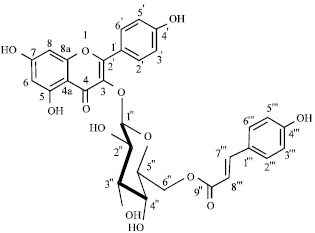Short Communication
Polyphenolic Content, Free Radical-scavenging Activity and Isolation of Tiliroside from Heliocarpus terebinthinaceus (Tiliaceae) Seeds
Insitute of Agroindustries, Universidad, Technologica de la Mixteca, Carr. Huajuapan-Acatlima Kam 2.5, Huajuapan de leon, Oaxaca, 69000, Mexico
A. Flores-Parra
Department of Chemistry, Cinvestav (Centro de Investigacion y de Estudios Avanzados), Mexico, A.P. 14-740, 07000, Mexico D.F., Mexico
R. Valadez-Blanco
Insitute of Agroindustries, Universidad, Technologica de la Mixteca, Carr. Huajuapan-Acatlima Kam 2.5, Huajuapan de leon, Oaxaca, 69000, Mexico
B. Fernandez-Rojas
Insitute of Agroindustries, Universidad, Technologica de la Mixteca, Carr. Huajuapan-Acatlima Kam 2.5, Huajuapan de leon, Oaxaca, 69000, Mexico
J.B. Martinez-Vasquez
Insitute of Agroindustries, Universidad, Technologica de la Mixteca, Carr. Huajuapan-Acatlima Kam 2.5, Huajuapan de leon, Oaxaca, 69000, Mexico
R. Salas-Coronado
Insitute of Agroindustries, Universidad, Technologica de la Mixteca, Carr. Huajuapan-Acatlima Kam 2.5, Huajuapan de leon, Oaxaca, 69000, Mexico










